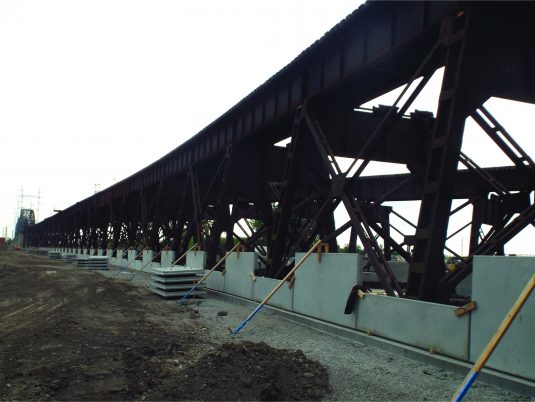



















Merchants Bridge, constructed in the late 1800’s, is the oldest rail structure crossing the Mississippi River, and is still used as a major route for freight. Renovations began in 2018 to increase capacity and meet new engineering standards. Due to the high volume of freight traffic, optimizing construction schedule and minimizing track downtime was made a priority. In the early stages of construction, The Reinforced Earth Company provided the contractor with a unique solution for renovating the bridge’s approaches on both sides of the river. The solution used a modified MSE wall design that would allow for the existing trestle to be left in place, so the railroad could continue to operate during most of the construction.
The trestle volume was filled from the bottom-up with low-density cellular concrete (LDCC), enclosed by concrete panels, which were anchored to the fill with galvanized steel MSE soil reinforcements. MSE walls are typically constructed using granular backfill, however in this case the use of a conventional MSE wall would require more labor and time to compact the fill inside the volume around the existing trestle. The LDCC was flowable, required no compaction effort, and may be placed in vertical lifts larger than a granular backfill would be. After the walls were constructed to the required grade, rail traffic was stopped, then ballast and new tracks were installed. From a retaining wall design standpoint, the modified MSE walls with LDCC fill are conservatively designed with applicable geotechnical parameters of long term shear strength and unit weight of the LDCC. The use of Reinforced Earth® technology on this project provided the needed benefit to the railroad’s schedule.